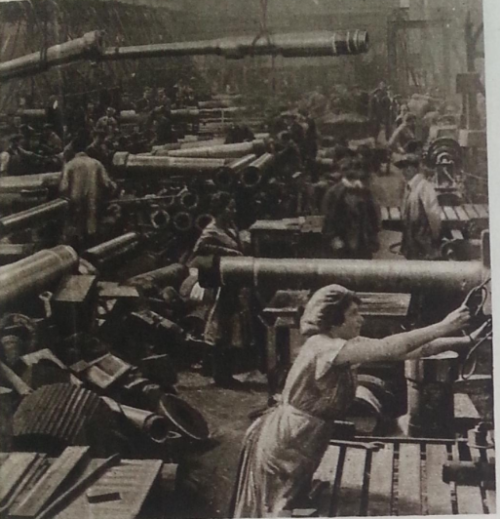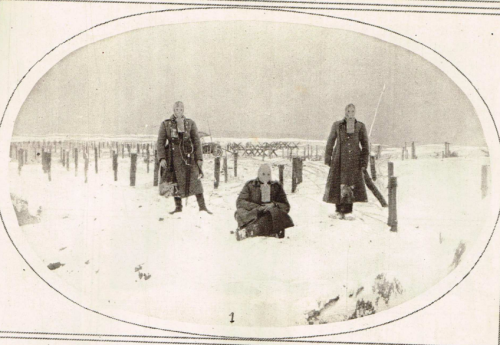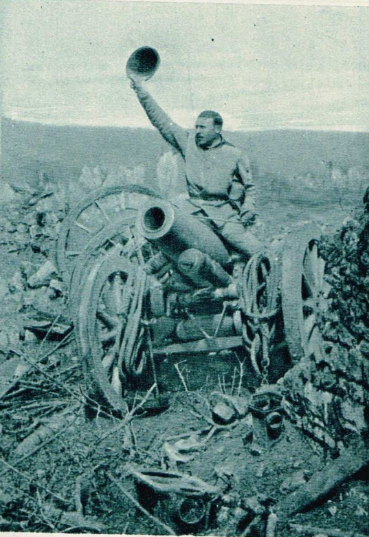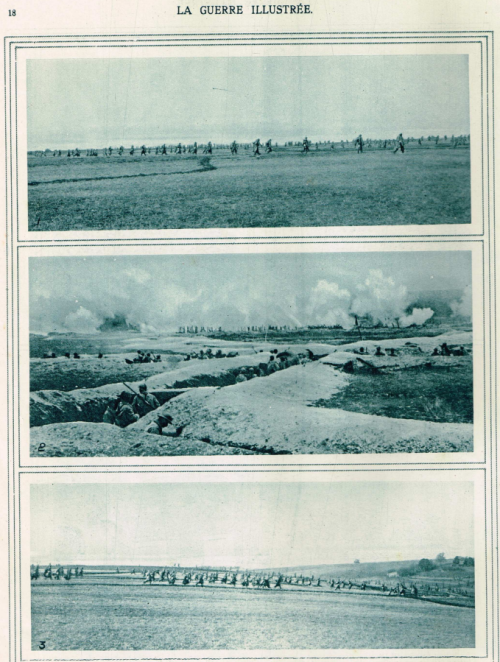#primeira guerra mundial
“INCIDENTS ON THE SALONIKA FRONT.
“ENEMY SHELLED OUT OF ONE OF HIS CAMPS.
“The General Officer Commanding the British forces at Salonika reports to-day: [26th September 1915]
“On our Struma front Karaska was shelled by French artillery, with the result that the enemy was compelled to move one of his camps.
“On our Doiran front our patrols made successful raids on enemy trenches.
“Hostile artillery and aircraft displayed considerable activity. Our aircraft engaged enemy machines on three occasions, and drove them off.
“From Paris to-day:
“From the Struma the Vardar there was an artillery duel, and rather lively skirmishes, notably on the British front in the Lake Doiran region.
“On the Serbian front there was no infantry action.
“Our artillery violently cannonaded the Bulgarian positions on the right bank of the Brod.
“To the east of Florina the French troops, viloently [sic] counter-attacked by important Bulgarian forces above Armenskon, magnificently resisted all the enemy’s assaults.
“Mowed down by our artillery and infantry fire, the assailants sustained considerable losses, and withdrew in disorder.
“To the west of Florina the Russians, in co-operation with our troops, engaged in lively combat to the north of Armenskon, in the course of which they took 50 prisoners and captured four machine guns.” [1]
[1] ‘Nottingham Evening Post,’ 26th September 1915.
Image: Lake Doiran, IWM Q 69029.
Reproduction from “The Salonika Campaign, 1915-1919″ on Facebook, don’t forget to support their work!
Post link
“THE OPERARY WOMEN IN THE BRITISH INDUSTRIAL ARMY”
“Two years ago the world’s biggest brick factory closed its doors as all of its workforced enlisted to the british army. This difficulty, however, was overcome due to feminine workforce joining the fold and soon the factory was working again. In the pictures: (1) A woman filling a brick molding machine with mud; (2) transporting bricks from the molding machine to the furnaces; (3) setting the bricks into the furnace; (4) taking the finished bricks to the railways.”
Feminine work during the Great War played a big role in the conflict, as more and more men enslisted and the war escalated, women were the ones left to make the war industry going. This is argued as one of the first movements that influenced the creation of feminism and female emancipation movements such as that, as more and more women filled the gap left by men and started to demand equal rights.
Source: A Guerra Illustrada/”La Guerre Illustrée” (The War Illustrated). February, 1918.
Post link
“THE BELGIAN ARMY AT THE FLANDERS FRONT”
“‘In the belgian people we have our best allies’ as would say the british minster of foreign affaris ‘Its heroism will be noted throughout all of history as most notable and inspiring episode of a period so full of great deeds’. These words just had been confirmed with the magnificent resistance that they had put up on Flanders.
In the photographs here you can see: (1) and (2) A belgian sentinel wathches over a trench using a new helmet; (3) A belgian machinegun in action on the frontline”
Source: “A Guerra Illustrada”/”Lá Guerre Illustré”, August, 1918.
Post link
“THE SUBTERRANEAN LIFE IN THE BRITISH FRONT”
A british soldier prepares to go underground with diging and oxygen equipment. P.S.: Note the little cage in his hand, it was used to hold a bird inside of it and take it underground. If the bird died, it would mean that there was no more oxygen in the tunel.
Source: “A Guerra Illustrada”/”La guerre Illustrée”, August, 1918.
Post link
BRAZIL IN THE GREAT WAR
“Paris, april the 7th, 1917.
“[To] Wenceslau Brazil — President of the Republic — Rio de Janeiro.
The diplomats who met in Paris to study the situation of the coward murder of brazilian citizens and the sinking of the “Paraná” [brazilian steamer sunk by a german u-boat on april the 5th, 1917], consider this as an act of war from Germany. We trust the energy, the resolve and the patriotism of the President of the Republic of the United States of Brazil to avenge the great crime against the National Flag by declaring War on Germany, which not only acted against the law but against humanity”
- Irineu Machado (displayed on the picture), Senator of Brazil [which lived in Paris by the time]. Machado was one of the greatest war agitators of Brazil, he insisted firmly on the entrance of the country in the Conflict. Brazil officially joined The War on 26 of october 1917. The country sent medical support to the frontlines as well as naval support in the atlantic.
Source: Revista América Latina (Latin America Magazine), may, 1917.
Post link
“THE WAR ILLUSTRATED, DECEMBER, 1917.”
“Until 1914, less than 200.000 women were employed in the war industry. This number increased to over a million nowadays. Of 500 processes needed to make a projectile, about 350 weren’t occupied by women until 1915, many of them require delicated and swift hands, for they are extremely dangerous if poorly executed.”
Source: La Guerra Illustrada/The War Illustrated, december, 1917.
Post link
“FREE RUSSIA ON THE FIGHT WITH GERMANY: (1) russian soldiers wearing gas masks; (2) a russian artillery post in the forest (P.S. — down under it there is a complex system of tunnels composed by 12 chambers)”
Source: La Guerre Illustrée, july, 1917.
Note how the magazine reffers to the russian imperial troops as “Free Russia”. By july 1917 russia had already begun its revolutionary process, with some serious clashes in Petrograd and the arrest of Leon Trotsky.
Post link






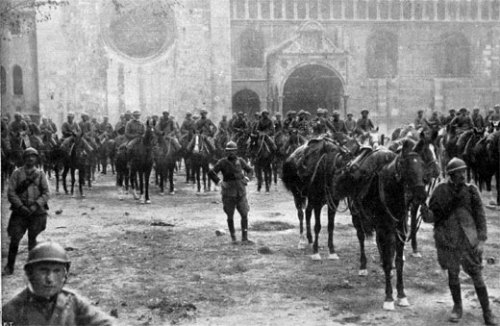
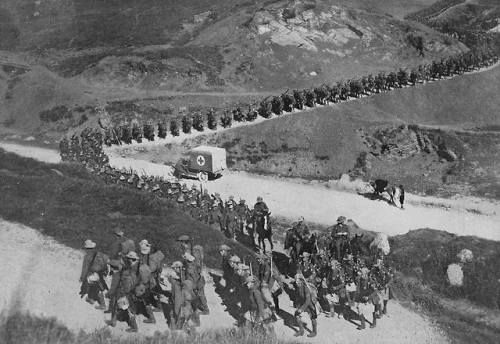

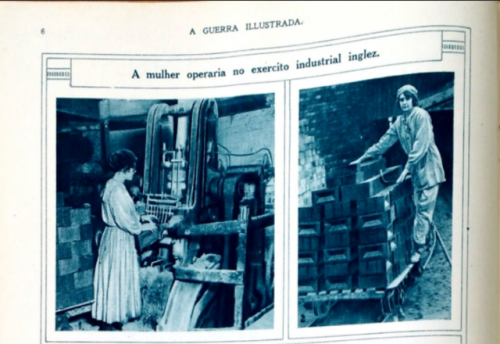


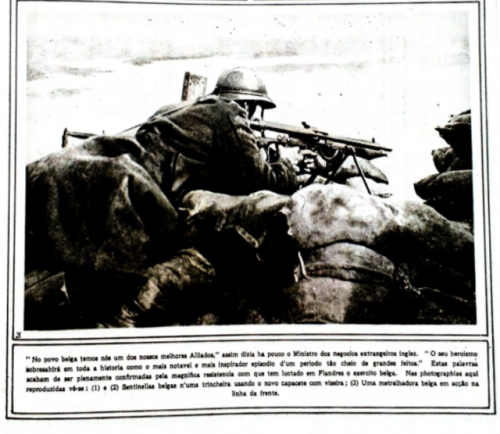
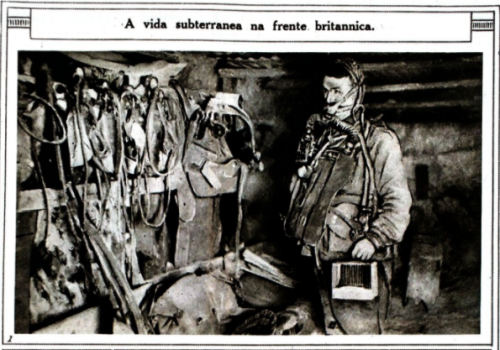
![BRAZIL IN THE GREAT WAR“Paris, april the 7th, 1917.“[To] Wenceslau Brazil — President of the Republi BRAZIL IN THE GREAT WAR“Paris, april the 7th, 1917.“[To] Wenceslau Brazil — President of the Republi](https://64.media.tumblr.com/c49854e5a32535b34743f9dd32e912df/b107e39479609273-6d/s500x750/2923b930da5d06ef5919004dffc8ca5d554d9fa7.png)



